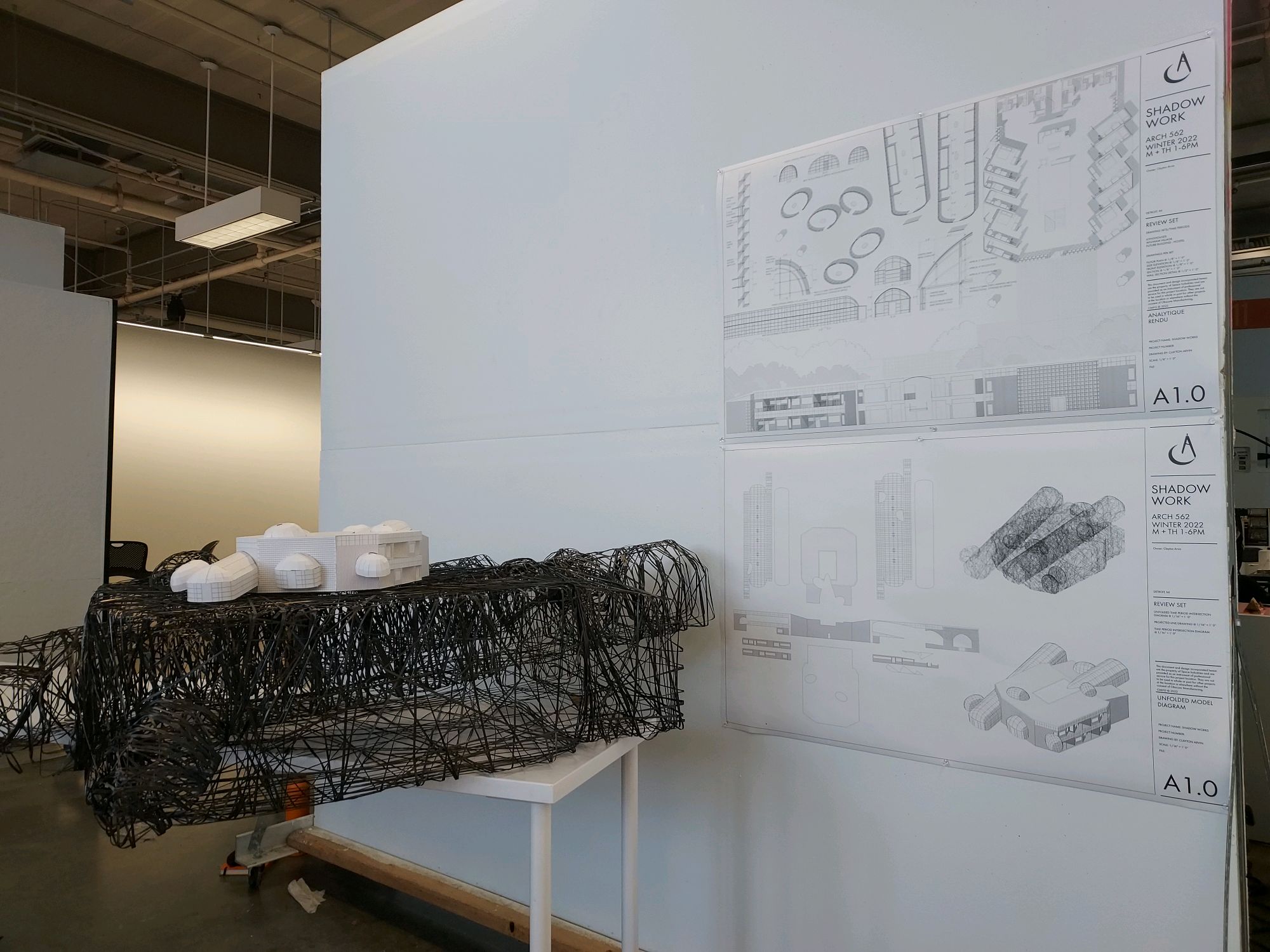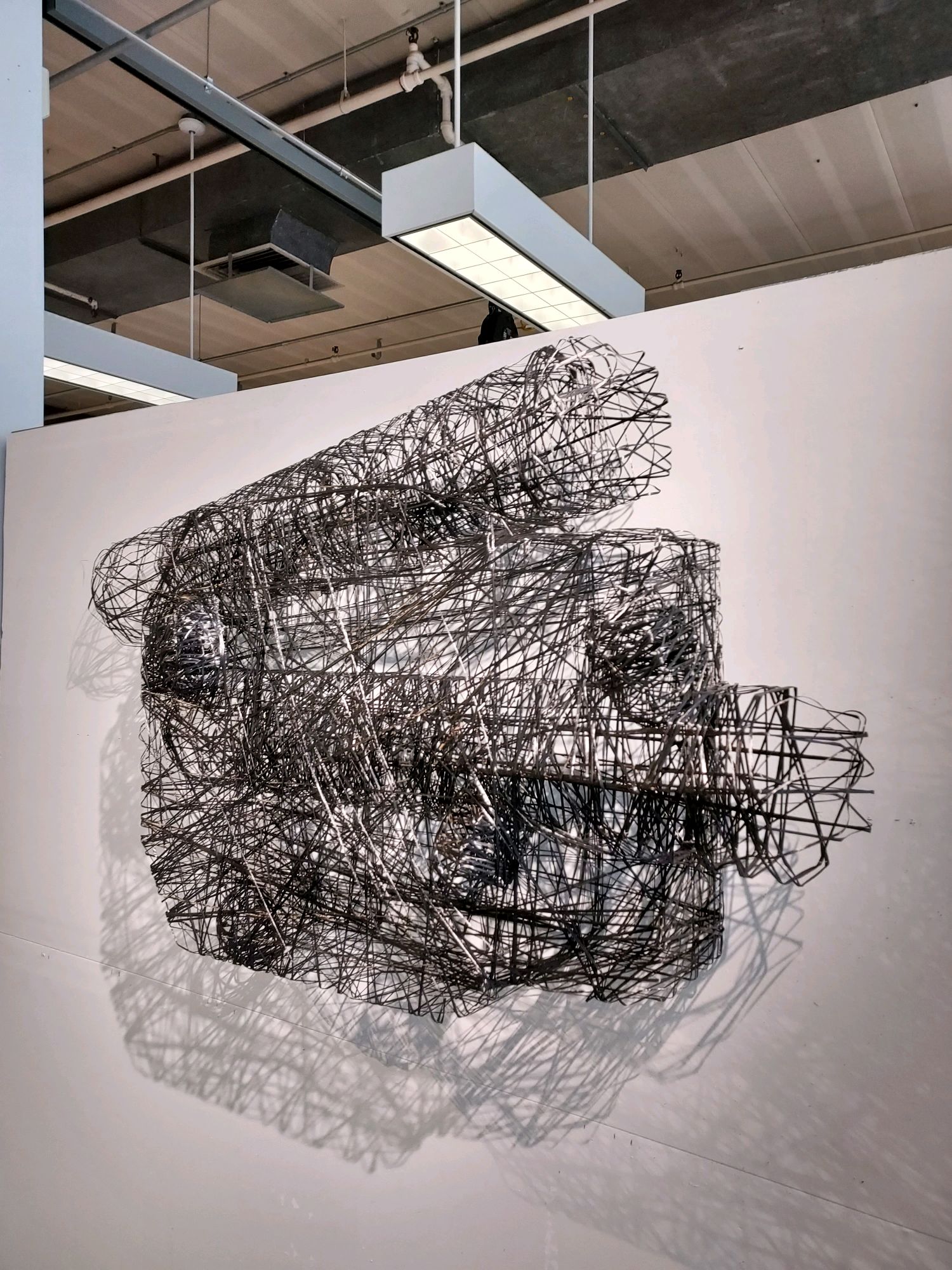Shadow Work
Prior to the Iroquois wars in the mid-1600s, Detroit and its immediate surroundings were largely utilized by tribes with the Iroquois language association, though much of the land of modern day Michigan was inhabited by tribes with Algonquin language associations. The Iroquois tribes are traditionally credited with the development and widespread use of longhouses, large multi-family dwellings crafted from bark or woven reed mats, and wood saplings, which are bent and layered to form the envelope of the building. These dwellings followed a modular system in which each family had their own hearth and associated living space within the building. Longhouses also accommodated storage of goods for overwintering. Their structure is largely speculative, as all evidence is based on historical accounts, archeological evidence of floor plans, and traditional building methods whose modern incarnations have been subject to heavy influence by colonizers. I’ve supposed that longhouses were built on the banks of the Detroit river in 1500 for the purposes of this project, which is plausible but not confirmed.
Following the Iroquois wars the Detroit area was largely unutilized by Native Americans, as it served as an intermediate space between hostile peoples. It remained this way until the construction of Fort Ponchartrain by the French in 1701, after which Cadillac invited various Native American tribes of varying linguistic and cultural associations to take up residence around the fort in order to better serve its purpose as a trading post. For the purpose of this drawing I’ve investigated the Ottawa settlement east of Fort Ponchartrain on the riverfront, and it is likely in the early years of this settlement that the inhabitants lived in wigwams, which were typical dwellings of the Ottawa people. Wigwams are single-family dwellings that utilize similar construction methods as longhouses, but at a far smaller scale, making for more temporary, less resource- and time- intensive buildings (though they still generally serve as seasonal homes rather than mobile dwellings).
My current structure adopts the modular system of the longhouse, scaled up to modern-day spatial standards, applied to the temporary housing model of a hostel. Hostels serve as a more communal alternative to hotels, with more space made available to each guest through the sharing of living spaces, food prep spaces, and restrooms. Stack ventilation shafts are modeled after the central hearths, penetrating from the ground floor to the roof in order to bring light into the interior and promote ventilation. The exterior brise soleil is modeled after the layered envelope of the longhouse, designed to capture the qualities of the layered, formed wood structure.
Winter 2022
![]()
![]()
![]()
![]()
![]()
![]()
![]()








